A great deal of this story results from a contact with a reader of the wires – who provided visual and text information necessary to tell the story. Except for images of the Remington, S&W products, all the images you see come from that reader – and I’m thankful he elected to share the tale.
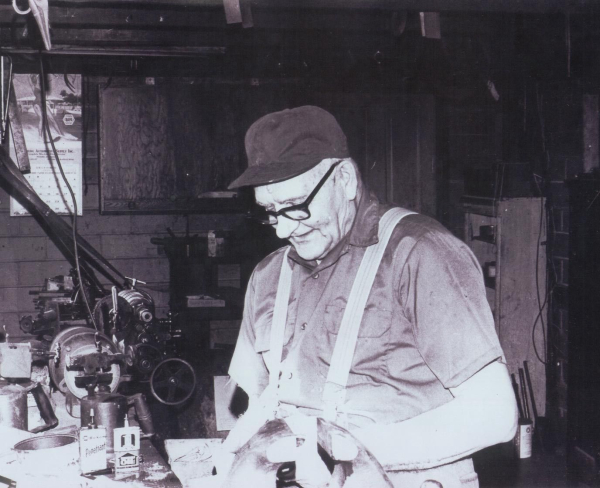
I’ve often told the story about my father getting a shotgun sorted out. He had a Remington Model 1100. Having hunted with it for years, it was needing a cleaning. He took it to a local gunsmith -- the local gunsmith who this story is about. Dad had complained that, aside from never having been detail stripped and cleaned, the finish was wrecked and he couldn’t hit flying game with it. The smith, Otis H. “Cactus Jack” McMurry, had him place the butt into the crook of his arm and see where his hand connected with the trigger – it didn’t, nearly reaching the fore-end. The length of pull was too short for him.
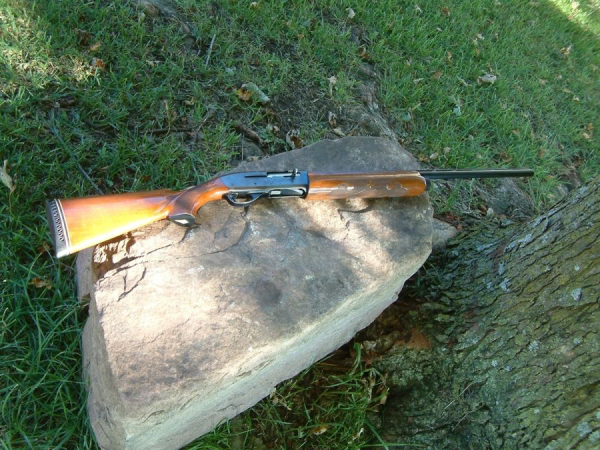
Aside from the cleaning, all he did to dad’s gun was increase the length of pull by addition of a recoil pad -- and making it look like it was factory installed, and refinished it. Some years later, Cactus Jack also did a job for me.
That involved taking a Smith and Wesson Model 28 Highway Patrolman and converting it to 45 ACP. I had the M28, but wanted a Smith and Wesson Model 25-2 (45 ACP, 6 ½” barrel). They were very pricey in those days and, as I had the Highway Patrolman, I ordered a barrel and complete cylinder made for the 25-2 (I believe it was ordered from Gil Hebard Guns). I took the collected mess to “Cactus Jack” and he took the job on.
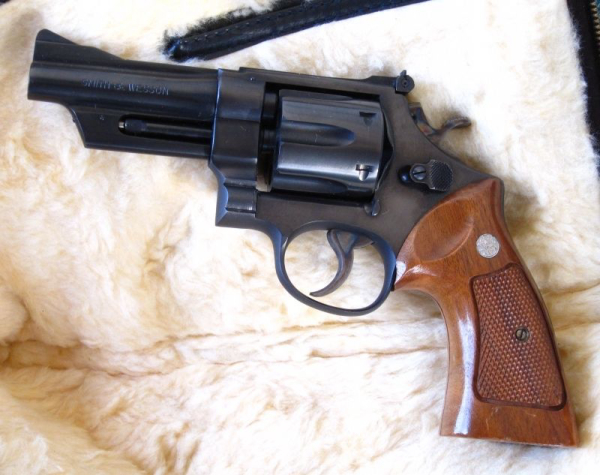
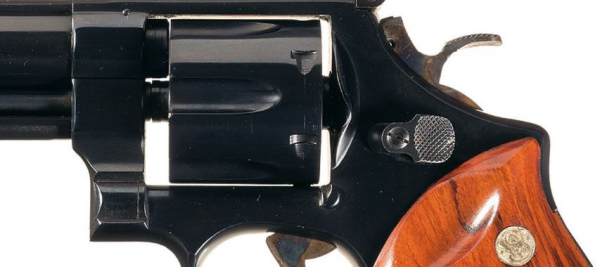
He did an outstanding job. The only part of the job not done would have required building up the cylinder stop stud on the left side of the frame; as the Magnum had a longer cylinder, the factory built 25-2 had an extension on the front of the cylinder stop stud to keep the cylinder from retreating to the rear when opened. He didn’t take that on, so it made for an in it made for an interesting range toy. The only other difference was the highly polished bright blue of the cylinder and the barrel contrasted with the brushed blue finish of frame of the Model 28.
That gun ultimately went down the road.
His shop was on the west side of North Broadway in a residence. There was a front door on the residence that went straight down into the basement. That’s where he had his shop. After I’d written about dad’s Model 1100, I was contacted by a reader who had known Cactus Jack back in the old days. He asked me if I’d known about guns that Cactus Jack had built. I did not. In the following years, he sent images and documents relating to these guns.
First, a little about the man – nearly all received from my correspondent. “Otis H "Cactus Jack" McMurry was a professional violinist and played for a Coffeyville radio station for several years. He was a gunsmith and operated a gunsmith shop in Pittsburg. He was a veteran of World War I, serving as a rifle instructor with the Army in France.”
That’s right – WWI. He’d been raised on a farm and did a remarkable amount of work just making things around the farm work. He had that kind of mind and that kind of dexterity. Continuing the story, as I received it, “… his “shop was in the basement of their house. You entered his shop/basement via stairs that you were in the center of the house. When Otis needed to test fire a weapon, he had an old log in the basement that he would fire into. After years of being shot the log became pretty loaded up with lead. According to a story from his grandson, when he was about 12 years old, he headed down the stairs one day to see his grandfather. About half way down the stairs Otis fired a round into the log which apparently bounced off lead in the log and the bullet hit Doug in the leg. It didn't hurt him, just a bruise, but forever after, the grandson liked to tell the story how his grandfather “shot him.””
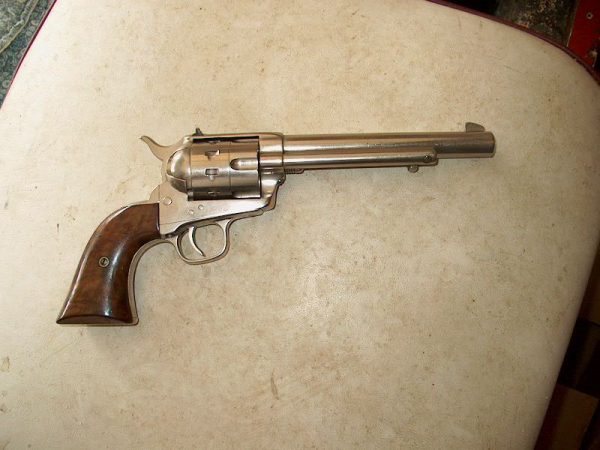
My correspondent went on to tell of a very interesting firearm. “I now own a gun that my father purchased from Jack about 1970. It was one of 6 Colt revolvers that Jack converted to .22 to prove a point. It's an interesting story that he typed up in a letter for my father. Two of the six are in the J M Davis Museum in Claremore, OK …”
As to that letter, I won’t put the image of it out there. There are names of those remembered and gone, but who still have families extant and I won’t have them bothered. I will do a bit of transcription, in the interests of history.
His “affidavit” reads, nearly, as follows: “When I started gunsmithing in 1936, I was constantly pestered by pistol addicts to target their pistols. They would bring in new Colt’s (sic) with heavy barrels and target sights which would, on a still day hit a 55 gal. oil drum at 30 ft. The average customer felt sure that the gun would shoot with a tight group if the sights were properly adjusted and he expected me to do that.”
I feel his pain.
“The best I could do with the Colt Officers Model 22 Cal. Target Pistol was a 5 ½” group at 50 ft., which won’t win medals. After extensive study, I determined that the inaccuracy was caused by misalignment of chamber and barrel in firing position, so to prove my point I made 6 cylinders and bored through a false barrel on the frame each cylinder was to be used on. I used Colt Frontier frames on all 6 guns. I tested these 6 guns from a rest and the poorest group was 1 ¼” and the best was ¾”. IO (10) shots at 50 ft.”
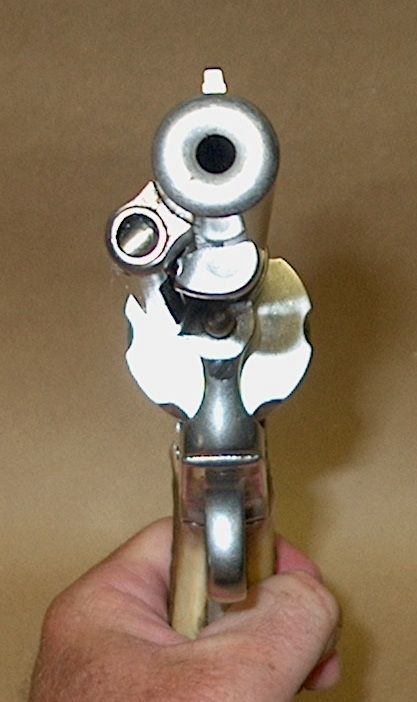
Essentially, he sleeved the barrels on Colt Single Action revolvers and constructed cylinders – literally fabricated them himself.
“These cylinders were IO shot (10-shot) and the length of a long rifle cartridge with a false spacer to fill the frame. … These are the actual facts and I swear to their veracity on a case of Jim Beam or any brand a jury may direct. … Otis H. McMurry. - Gunsmith.” (and – handwritten) “& Bullshipper”
From my correspondent’s email, “Attached is the affidavit from Jack that I mentioned along with a couple of pictures of the gun I own. I also attached a photo of the two, as we call them "Cactus Jack Specials" in the J W Davis Museum in Claremore.”

He’s aware of the continued existence of four of these guns. He’s fired his; it’s heavy enough that the gun doesn’t move at ignition. The 22 LR isn’t enough to move it.

They’re very interesting guns from a very interesting time. Do you want a gun that has some similarity to these? Currently you can look at the Ruger “Single Ten,” a 10-shot single action revolver, a Lipsey’s version shown here. With modern technology, we’ve gone back to the past.
-- Rich Grassi